Dry Curry is a no-gravy version of Japanese curry rice made with ground meat and minced vegetables and often topped with a fried egg. This homestyle meal is flavorful, gently spiced, and savory with a hint of sweetness from raisins. Although it’s not a well-known dish outside of Japan, this quick and easy curry is a staple in Japanese households.
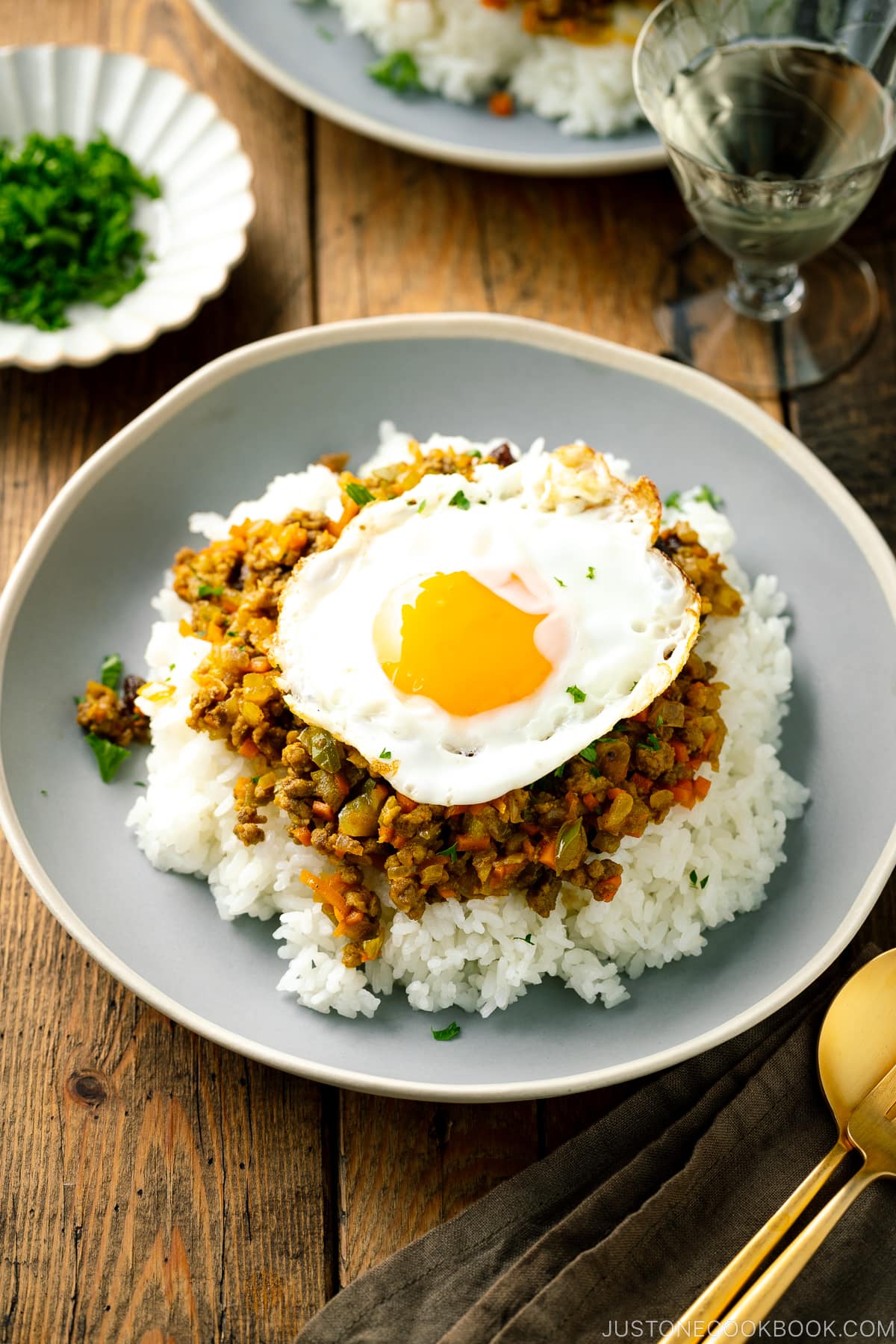
Japanese curry has a solid reputation in today’s world of curries, but have you heard or tried Dry Curry (ドライカレー)? As the name suggests, it does not have any gravy and is made with ground meat and finely diced vegetables.
It was my favorite curry to make when I first started cooking for myself back in my college days! Today, I consider it my go-to on busy weeknights. Not only does the curry come together so quickly, it is packed with comfort and has a lot of vegetables in it. You can make a big pot for freezing or just one serving if you’re cooking for yourself.
Does it sound like a curry you’re interested in? I hope you love this dry curry as much as I do!
Table of Contents
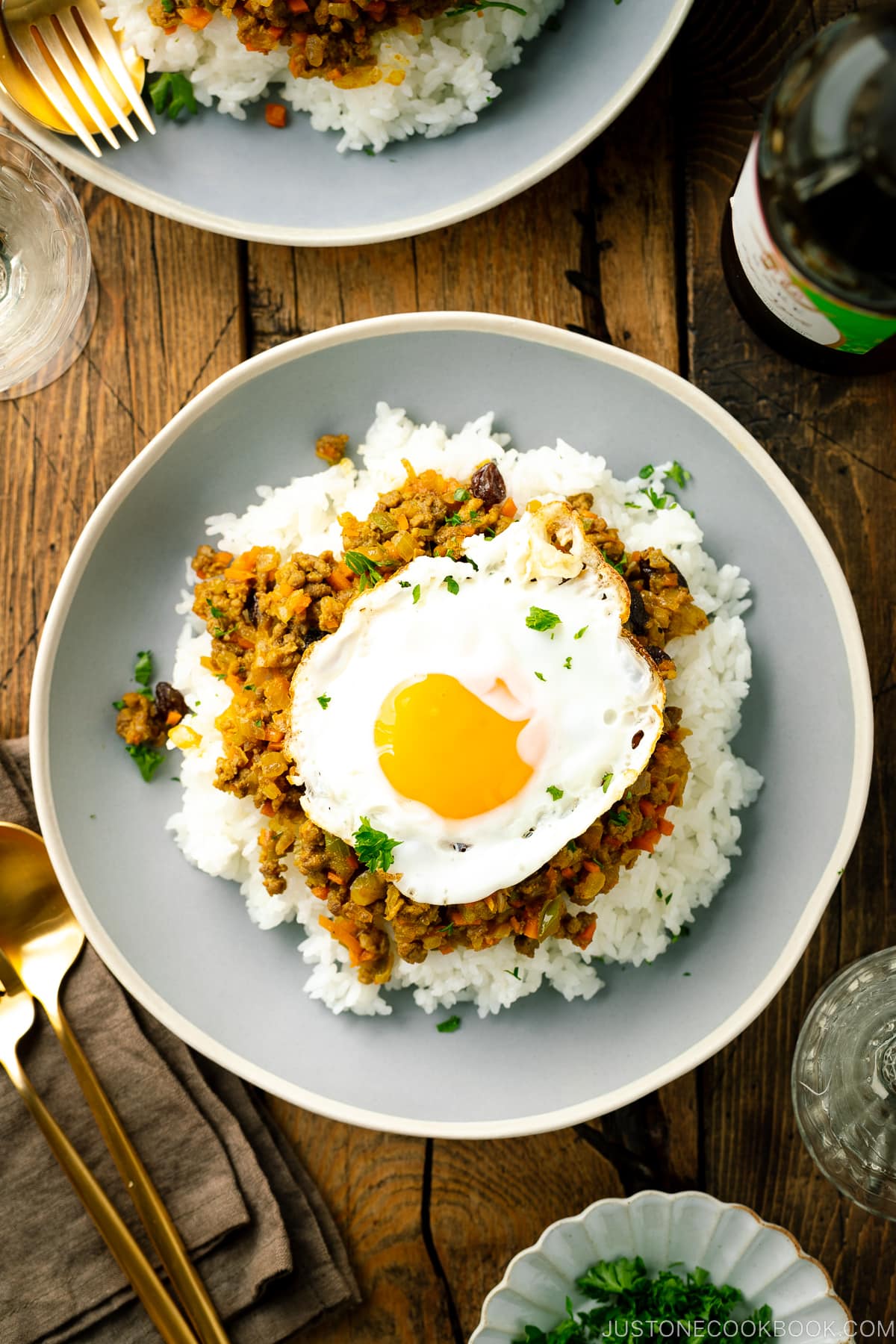
What is Japanese Dry Curry
Dry Curry is a type of curry that is made with ground pork or beef (or both) and minced vegetables that are seasoned with curry powder, Worcestershire sauce, and ketchup.
Unlike a typical Japanese curry, this dish does not contain sauce or thick gravy; therefore, the curry-flavored minced ingredients are served over a bed of steamed rice and often topped with a fried egg or sliced boiled egg.
It’s a very common home-cooked meal in Japan so you will see many variations. I love tossing in some raisins because they add just enough sweetness and balance out the gentle spiciness of the curry.
When it comes to vegetables, the dry curry offers plenty of room for flexibility. You can chop up any leftover veggies you can find in the fridge. Some people add tomatoes, eggplants, zucchini, and more.
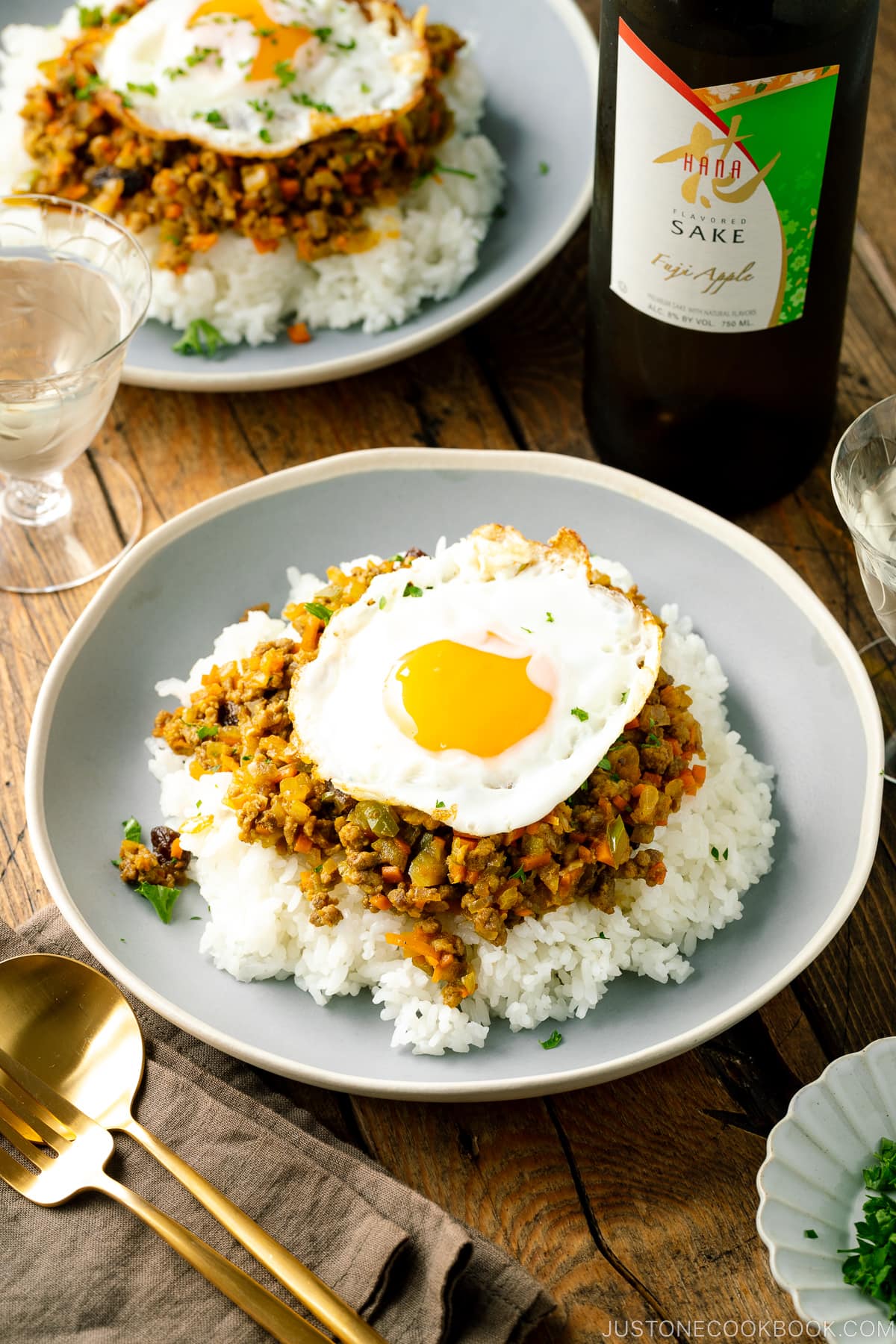
How to Make Japanese Dry Curry
Ingredients You’ll Need
- Ground pork/beef – You can use any type of ground meat.
- Onion
- Green bell pepper
- Carrot
- Raisins (optional) – It’s really nice to add a touch of fruity sweetness to the savory curry.
- Aromatics: ginger and garlic
- Condiments: salt, pepper, Japanese-style curry powder, sake, chicken stock, mirin, Worcestershire sauce, soy sauce, ketchup, honey
- Toppings: parsley and eggs
Overview: Cooking Steps
- Mince all the vegetables.
- Cook the onion, ground meat, and the rest of the veggies.
- Season the mixture and let it simmer.
- Make fried eggs.
- Serve the steamed rice, and place the dry curry and a fried egg on top.
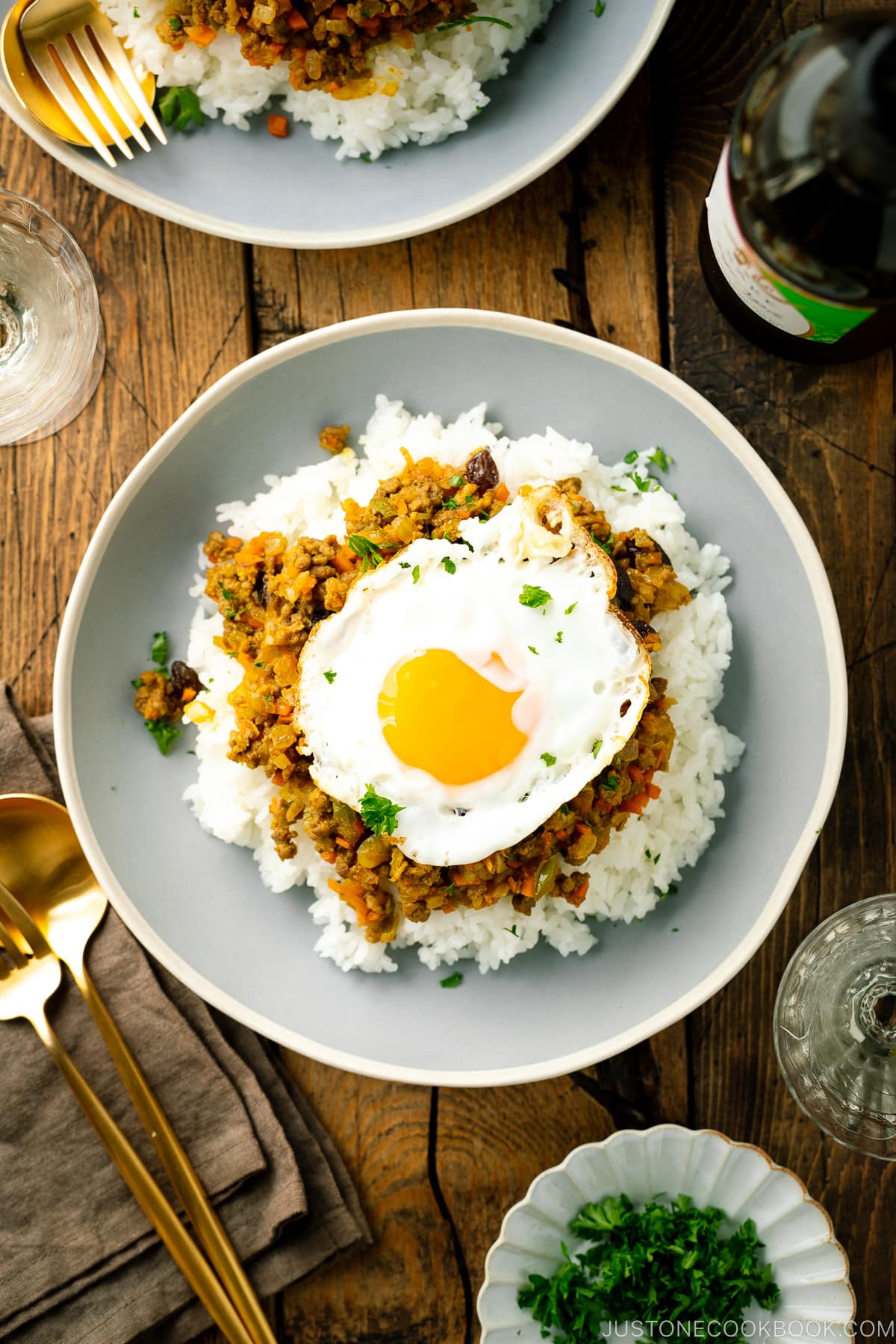
Japanese Dry Curry Cooking Tips
- Use both ground beef and pork. In Japanese cooking, it’s common to use the ground beef and pork combination called Aibiki-niku (合い挽き肉). It gives a more complex flavor, texture, and taste. A good beef-to-pork ratio is 2 to 1 (8 oz/4 oz) or 3 to 1 (9 oz/3 oz).
- Use Japanese curry powder. I recommend the S&B brand curry powder if you wish to make this dish as authentic as possible. You can use packaged curry powder from an Indian grocery store, but the blend can taste drastically different from Japanese-style curry powder.
- Chop the vegetables into uniform sizes. It definitely looks better when the ingredients are in similar sizes and shapes, but it also gives a better bite to the overall texture.
- Measure the seasonings (condiments) prior to cooking. If you don’t measure the condiments ahead of time, the cooking liquid will evaporate while you add condiments one at a time. You will need to quickly add the condiments all at once, close the lid, and let it simmer.
- Use a lid for the frying pan. Dry curry is not a soupy, saucy, or gravy-like curry so you won’t be cooking ingredients with broth. We use a small amount of chicken broth and the moisture released from the vegetables to cook the mixture. Therefore, it’s important to utilize a lid to cook the vegetables while steaming. Without it, the moisture will escape and it will require more broth or a longer time to cook the ingredients. Dry curry does not require broth, but I use a small amount of chicken broth to add savoriness.
Freeze Extra Dry Curry for Next Meal
Japanese dry curry stores well in the refrigerator for up to 3-4 days and it’s also freezer-friendly, so feel free to make a big batch. I usually divide the leftovers into a one-serving glass container. I recommend using a glass container as the curry can stain the plastic container and you can microwave it directly. If you freeze cooked rice as I do, defrost the rice and dry curry for a quick instant homemade meal!
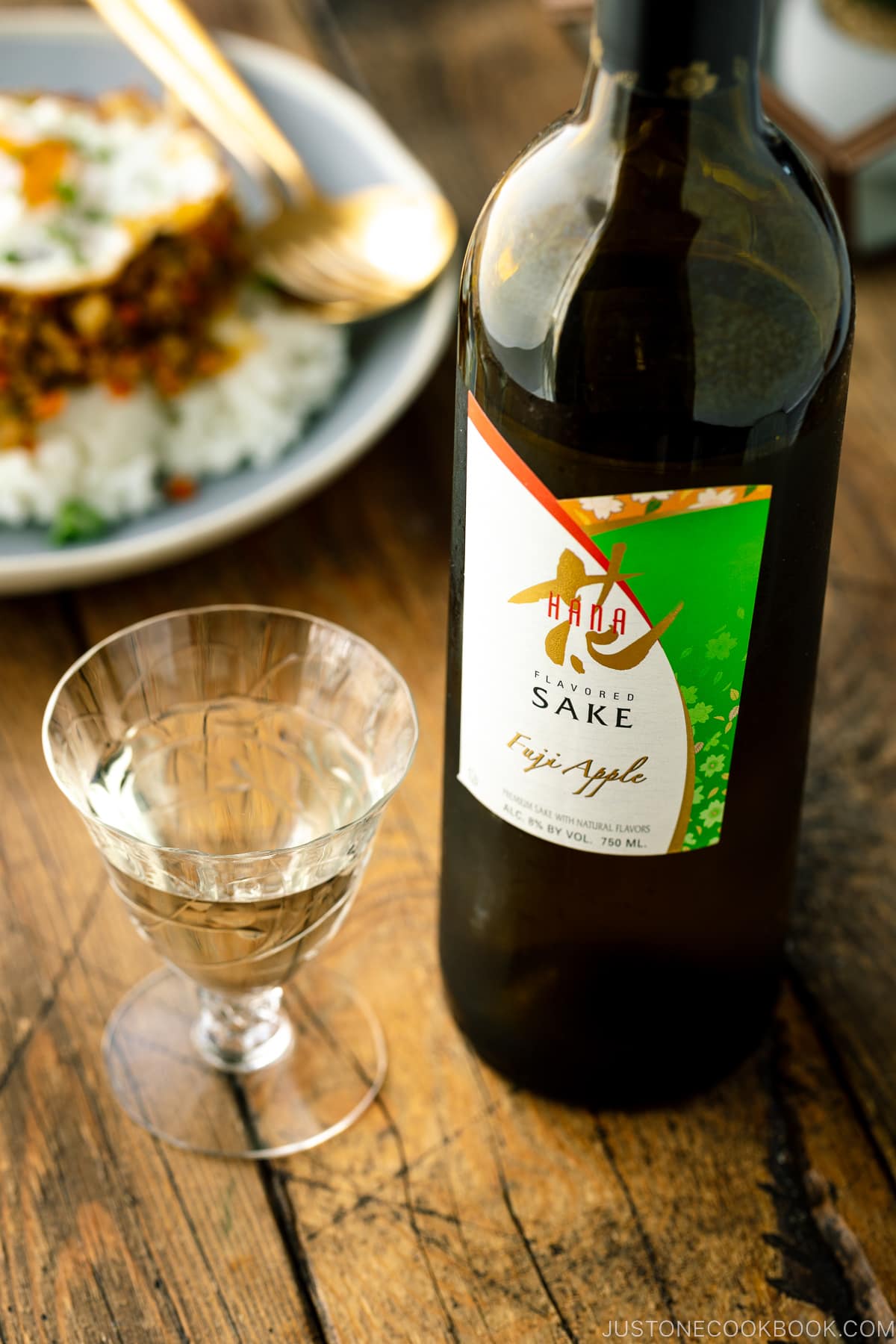
Sake Pairing with HANA Fuji Apple Flavored Sake
For this dry curry recipe, we paired it with Takara Sake’s HANA Fuji Apple Flavored Sake. You may think it’s odd to pair curry with apples, but it’s surprisingly common. I often grate apples into my curry to balance out the spices and even House Food’s Vermont Curry includes apples in their boxed roux.
I tend to love sweet drinks and I have to say this sake is one of my favorites! The sake has a bright fuji apple aroma and it’s delicate on the nose. As you sip it, the texture of the sake is creamy and rich, contrasting well with the dry curry. The apple-flavor tastes authentic, and it is really delicious with a clean finish.
Also, the alcohol in HANA Fuji Apple Flavored Sake is 8% so it’s more similar to beer than a standard sake (15%). An excellent choice for those who don’t like the taste of alcohol. Its low alcohol makes it a fine aperitif, either straight up or on the rocks.
Our dry curry meal was a simple dinner, but serving it with the fruity sake really elevated the enjoyment with a taste of fall to the table.
What to Serve with Japanese Dry Curry
Looking to add a few other dishes to make it a more elaborate dinner? Here are some great sides to pair it with:
- Asian Coleslaw
- Shrimp Egg Rolls
- Heirloom Tomato Salad
- Spinach Salad with Sesame Dressing (Gomaae)
- Vegetable Miso Soup
- Japanese Pickled Cucumbers
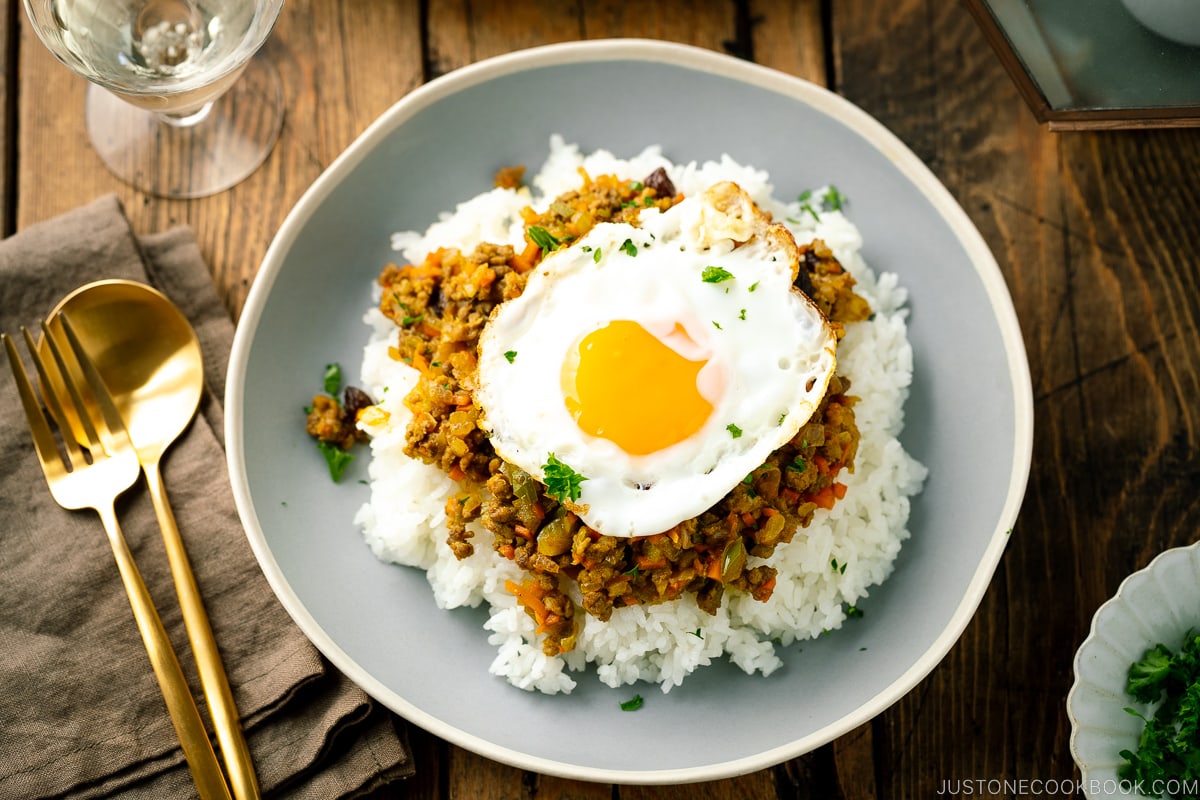
Wish to learn more about Japanese cooking? Sign up for our free newsletter to receive cooking tips & recipe updates! And stay in touch with me on Facebook, Pinterest, YouTube, and Instagram.
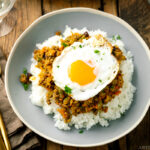
Japanese Dry Curry
For the Dry Curry
- ½ tsp ginger (grated, with juice; from a 1-inch, 2.5-cm knob)
- 2 cloves garlic
- 1 onion (11 oz, 312 g)
- ½ green bell pepper (3 oz, 85 g)
- 4 oz carrot
- 3 sprigs parsley (for garnish)
- 2 Tbsp neutral oil (divided; for cooking the eggs and dry curry)
- 4 large eggs (50 g each w/o shell) (for the fried eggs; optional)
- ¾ lb ground beef and pork combination (12 oz; a good beef-to-pork ratio is 2 to 1 (8 oz/4 oz) or 3 to 1 (9 oz/3 oz)
- ½ tsp Diamond Crystal kosher salt
- ⅛ tsp freshly ground black pepper
- 1 Tbsp sake
- 3 Tbsp raisins (1 oz)
For the Curry Seasonings
- 1½ Tbsp Japanese curry powder (use S&B Curry Powder for that familiar Japanese curry flavor; you can buy it on Amazon)
- ⅓ cup chicken stock/broth
- 1 Tbsp mirin
- 2 Tbsp Worcestershire sauce (I used Lea & Perrins Worcestershire Sauce; use vegan Worcestershire sauce for vegan)
- 1 Tbsp soy sauce
- 2 Tbsp ketchup (I use ketchup without corn syrup)
- 1 Tbsp honey
- Gather all the ingredients. Make sure the rice has finished cooking before preparing the dry curry. As I mentioned in the cooking tips section of the blog post, I recommend measuring all the condiments (from the chicken broth to the honey) and mixing them in a bowl before cooking.
To Prepare the Ingredients
- Peel and grate the ginger (I use this grater) and measure ½ tsp ginger (grated, with juice). Mince or crush 2 cloves garlic (I use a garlic press).
- Mince 1 onion finely: Cut the onion in half. Lay one half flat side down on the cutting board. With the knife edge toward the root end, make ⅛-inch horizontal slices, keeping the root intact. Then, with the knife tip pointing toward the root end, make ⅛-inch vertical slices to within ½ inch of the root end, again keeping the root intact.
- Finally, make perpendicular cuts down through the vertical slices you made. Repeat with the other onion half. If the onions need to be chopped finer, you can run your knife through them using a rocking motion. Be sure to hold down the tip of the knife; otherwise, the onions will go flying around the room.
- Cut ½ green bell pepper into thin strips. Then, mince the strips.
- Cut 4 oz carrot into thin slabs, then into thin strips. Then, mince the strips.
- Mince 3 sprigs parsley and set it aside for the garnish.
To Fry the Eggs
- Heat a large frying pan over medium heat. Once it‘s hot, add 1 Tbsp of the 2 Tbsp neutral oil and evenly distribute it. Then, crack 4 large eggs (50 g each w/o shell) into the frying pan (here, I made 2 fried eggs at a time; you may need to fry them in batches). Fry them on one side only, scooping the hot oil with a spoon and pouring it over the uncooked egg whites a few times. The hot oil will cook the whites faster and prevent the yolks from getting overcooked. When the whites are just set but the yolks are still soft and runny, transfer the eggs to a plate and set it aside. Tip: I prefer to fry my eggs sunny side up because the soft yolk adds a rich and creamy texture to the dry curry.
To Cook the Dry Curry
- Heat the same large frying pan over medium heat. Once it‘s hot, add the remaining 1 Tbsp oil, evenly distribute it, and then add the onion.
- Sauté the onion until golden brown and translucent, about 5–6 minutes.
- Add ¾ lb ground beef and pork combination and season it with ½ tsp Diamond Crystal kosher salt and ⅛ tsp freshly ground black pepper. Stir to combine.
- Add the ginger and garlic and stir until fragrant. Continue cooking, breaking up any clumps with the spatula, until the meat is no longer pink.
- Add 1 Tbsp sake and mix well.
- Add the carrot and bell pepper and combine well. Then, cover the pan with a lid and lower the stove‘s heat to medium low. Cook for 3 minutes. Tip: Make sure the lid is tight-fitting to preserve the cooking liquid and prevent evaporation, which may cause the food to burn on the bottom of the pan.
- After 3 minutes, the vegetables will have released some of their moisture and should be slightly wilted. Next, add 1½ Tbsp Japanese curry powder and combine well with the vegetables.
- Add the rest of the dry curry seasonings: ⅓ cup chicken stock/broth, 1 Tbsp mirin, 2 Tbsp Worcestershire sauce, 1 Tbsp soy sauce, 2 Tbsp ketchup, and 1 Tbsp honey.
- Mix it all together. Add 3 Tbsp raisins and stir to incorporate.
- Cover the frying pan again and cook on low heat for 4–5 minutes. Then, open the lid and taste the dry curry, adjusting the seasoning as needed. Tip: Make sure the lid is tight-fitting again! If you see the cooking liquid disappearing, add a small amount of water so you can cook for the entire 4–5 minutes.
To Serve
- Serve the steamed rice on individual plates and spoon the dry curry over the rice. Top with a fried egg (optional) and garnish with chopped parsley.
To Store
- You can keep the leftovers in an airtight container and keep them for 3 days in the refrigerator or for up to a month in the freezer.
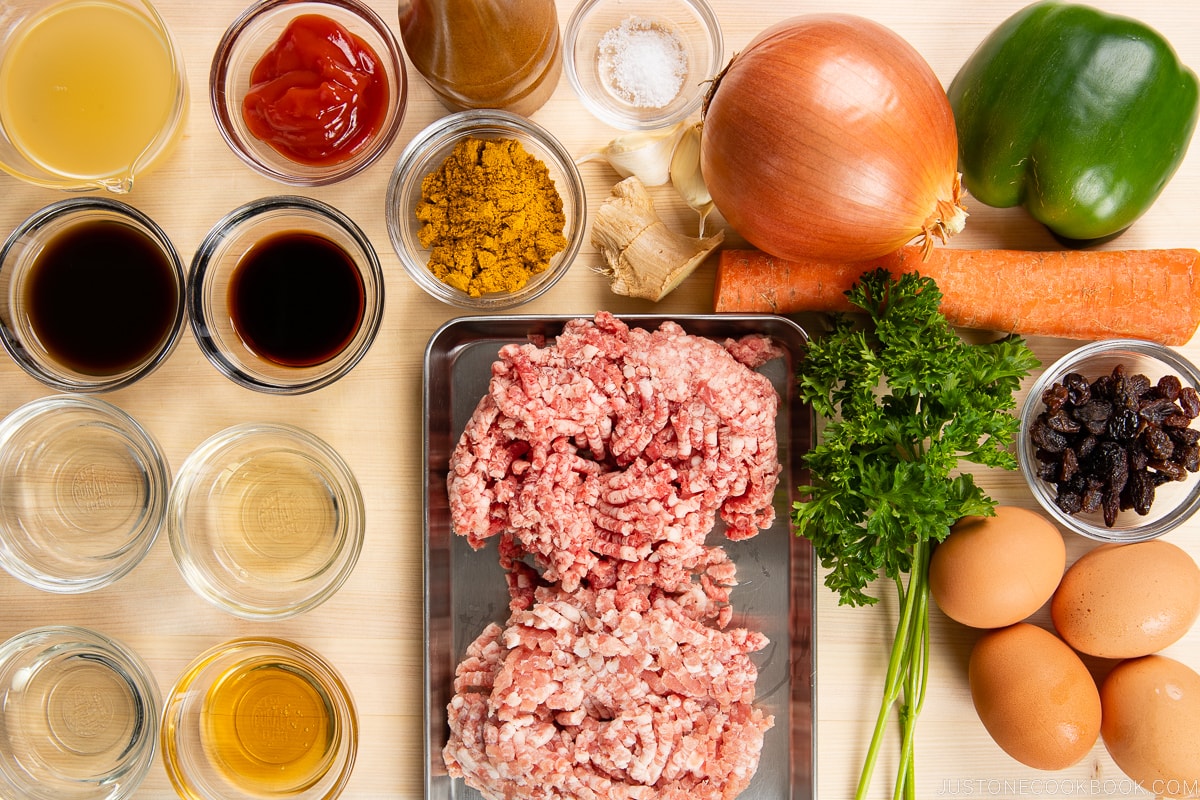
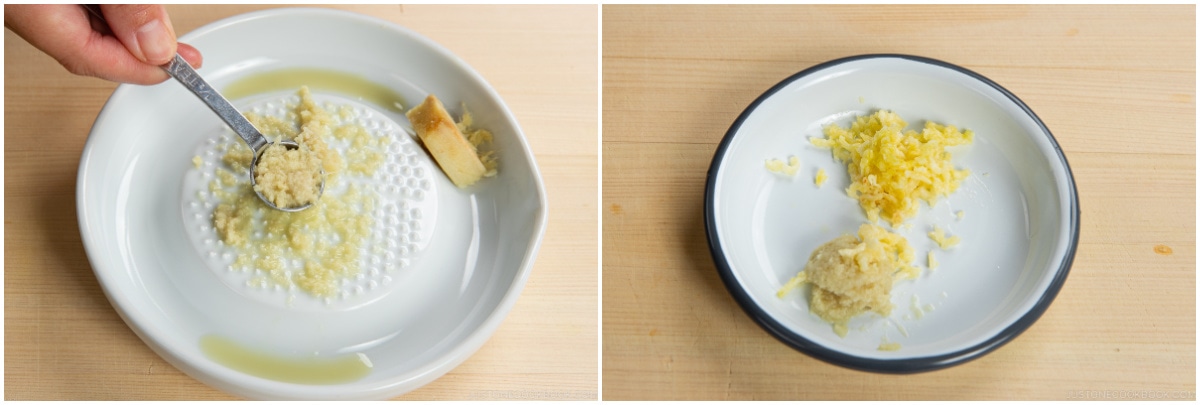
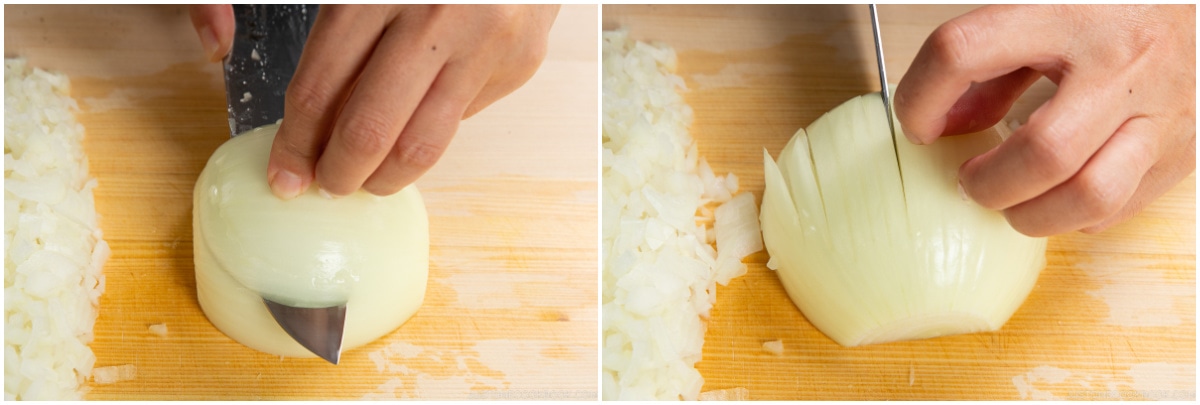
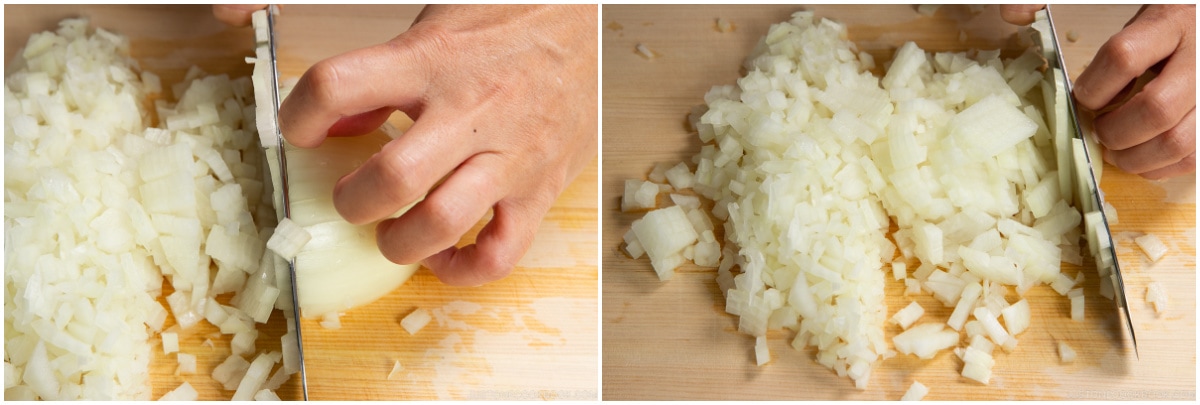
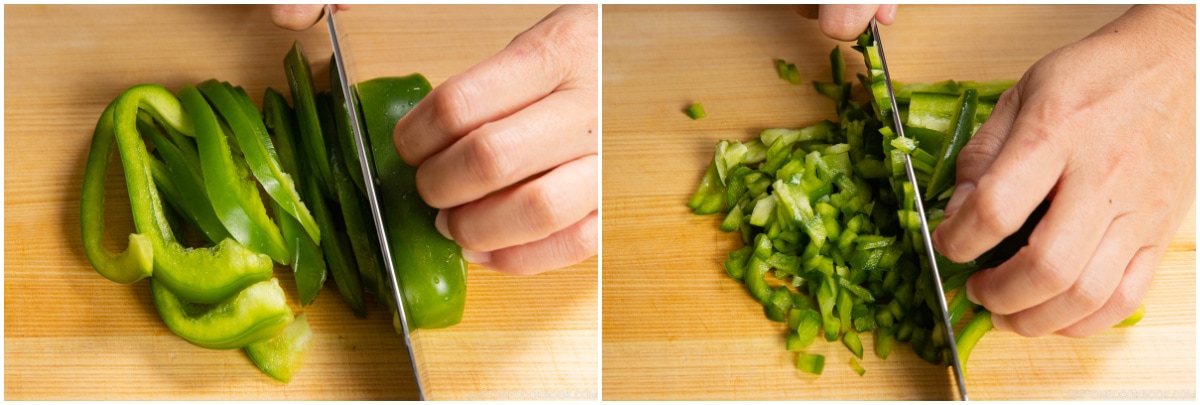
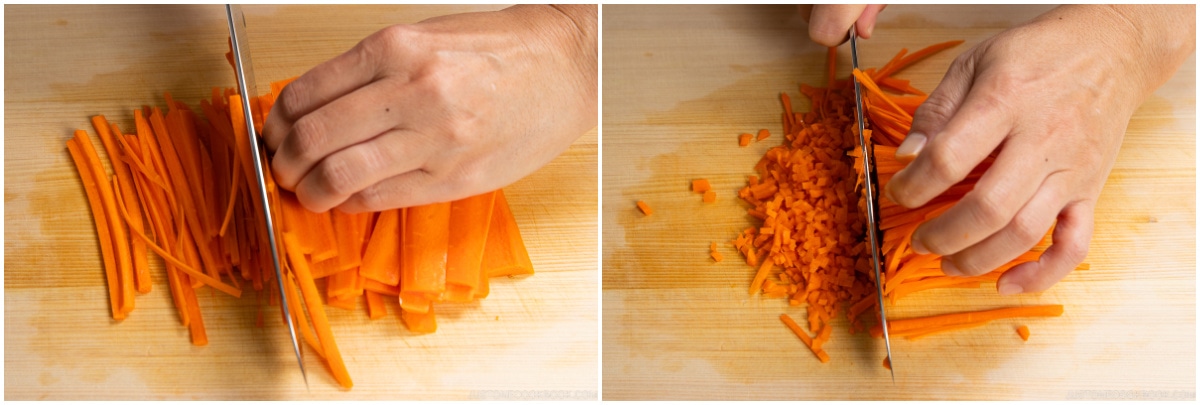
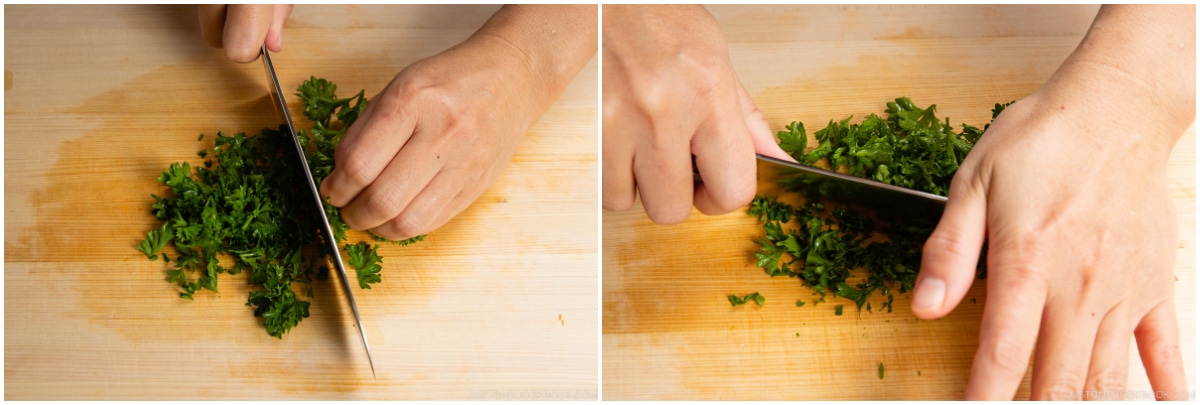
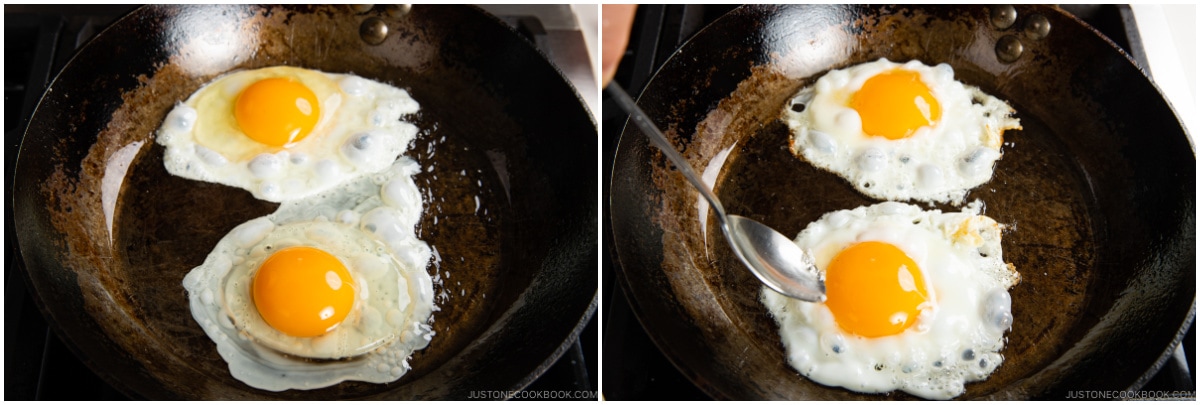
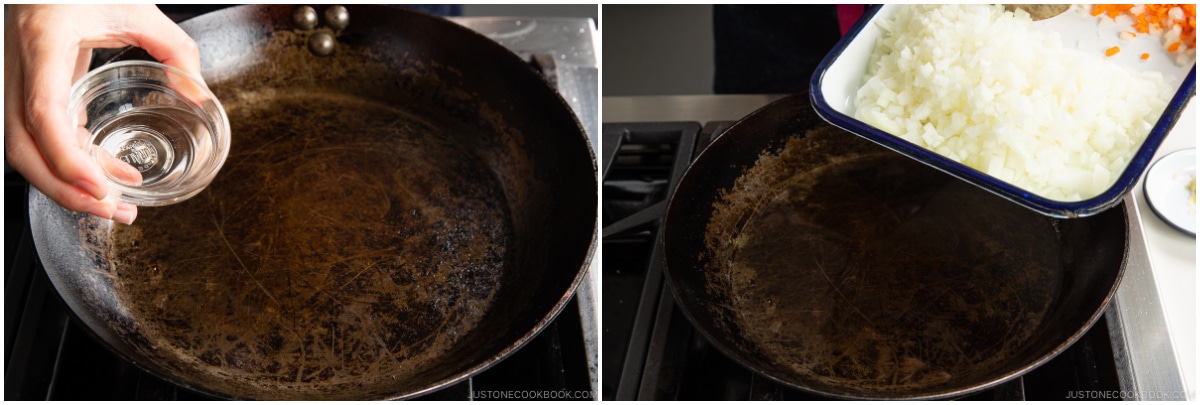
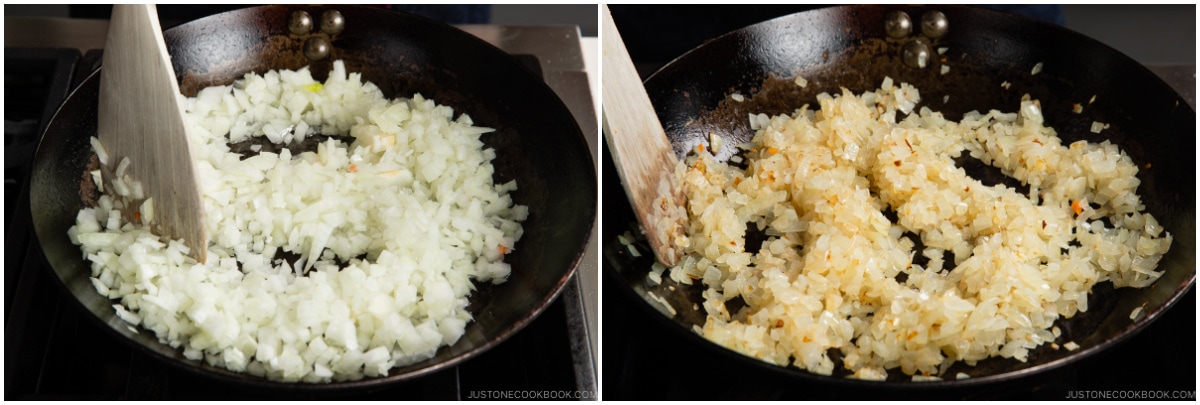
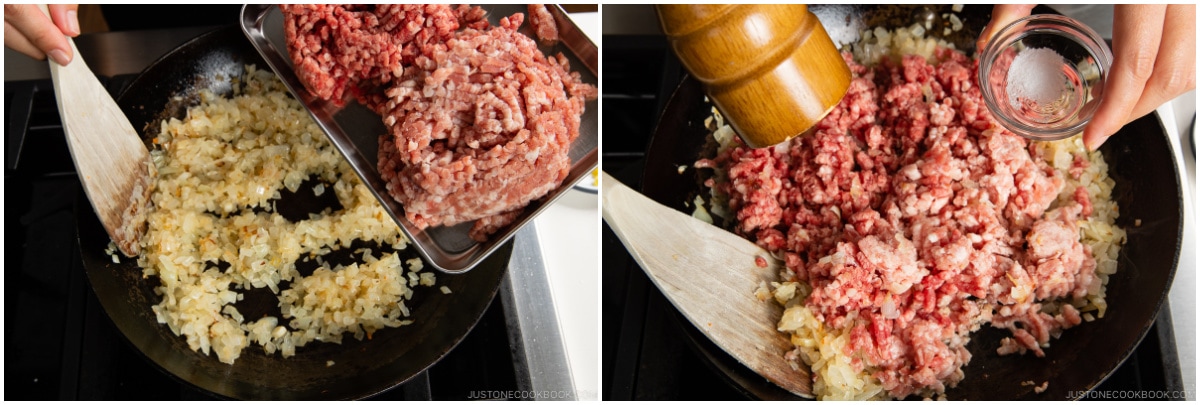
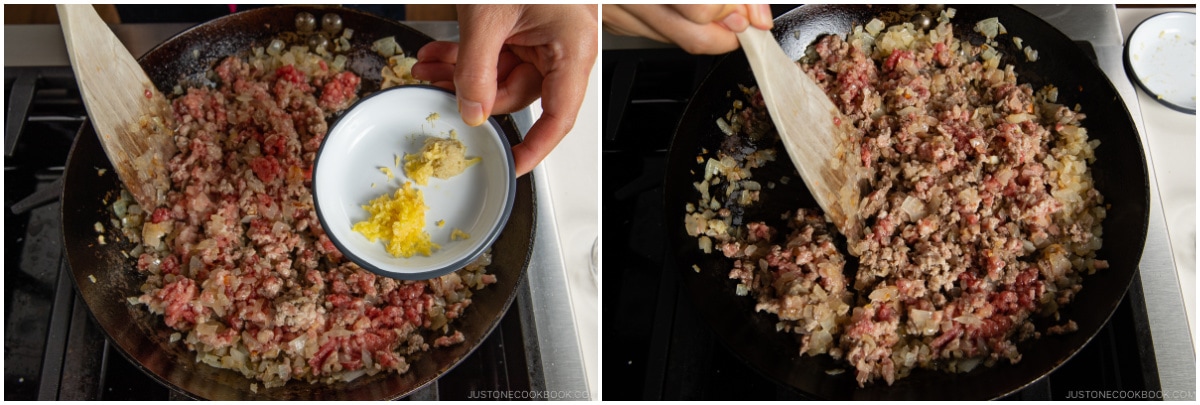
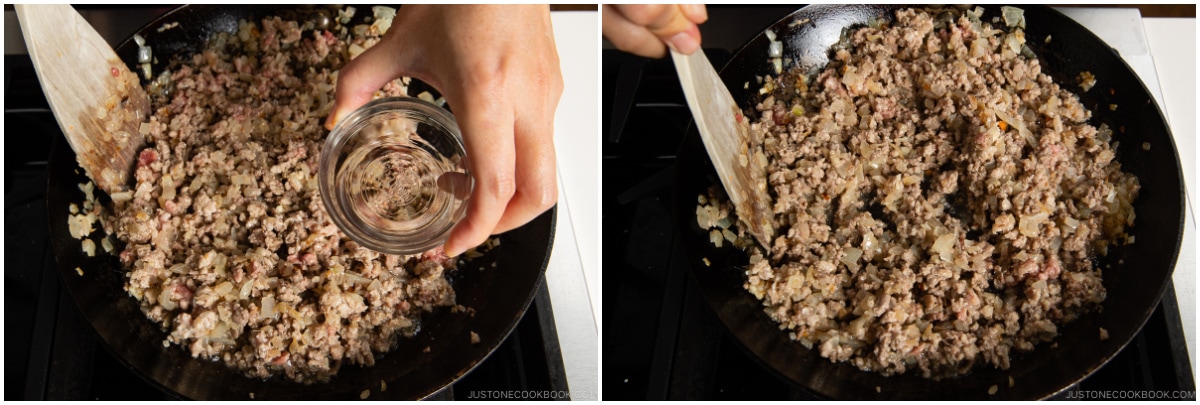
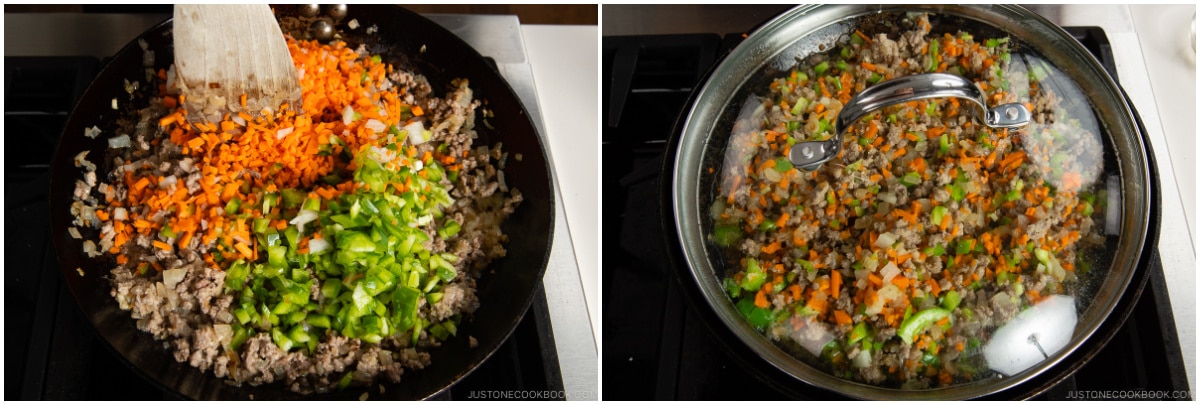
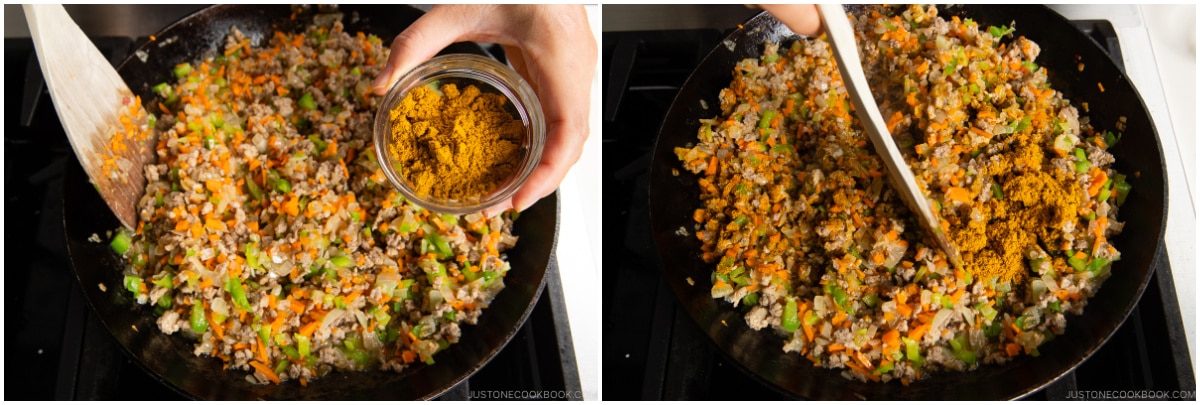
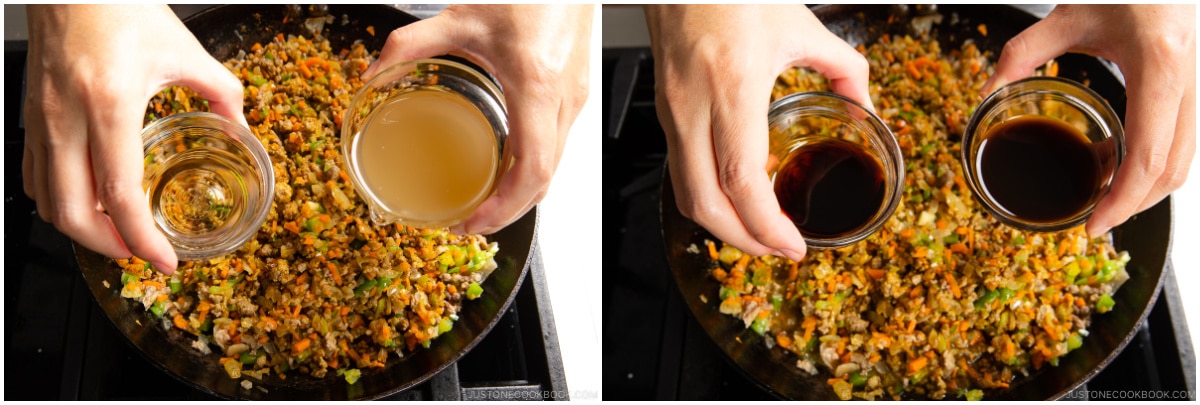
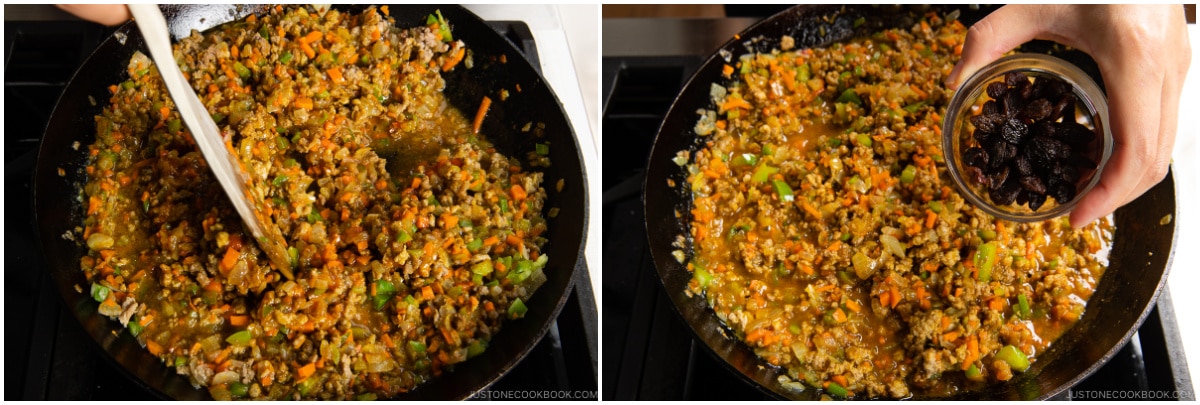
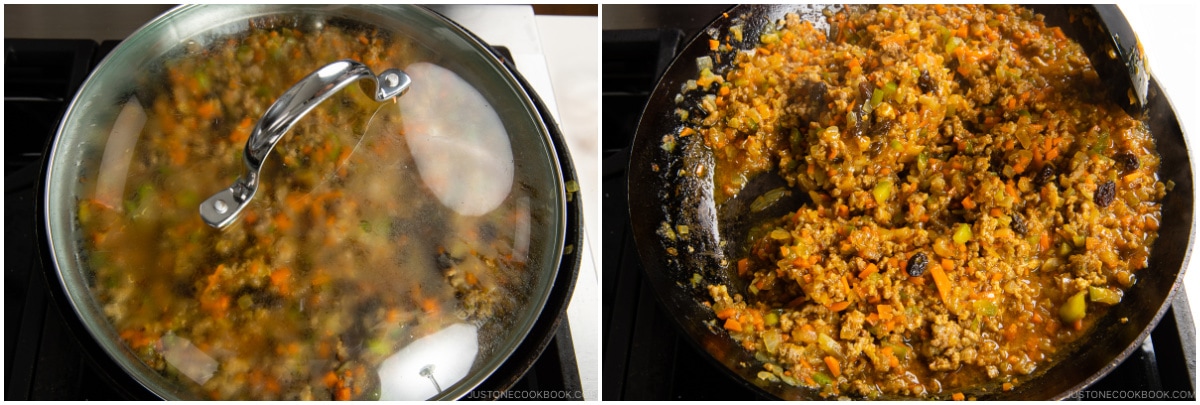
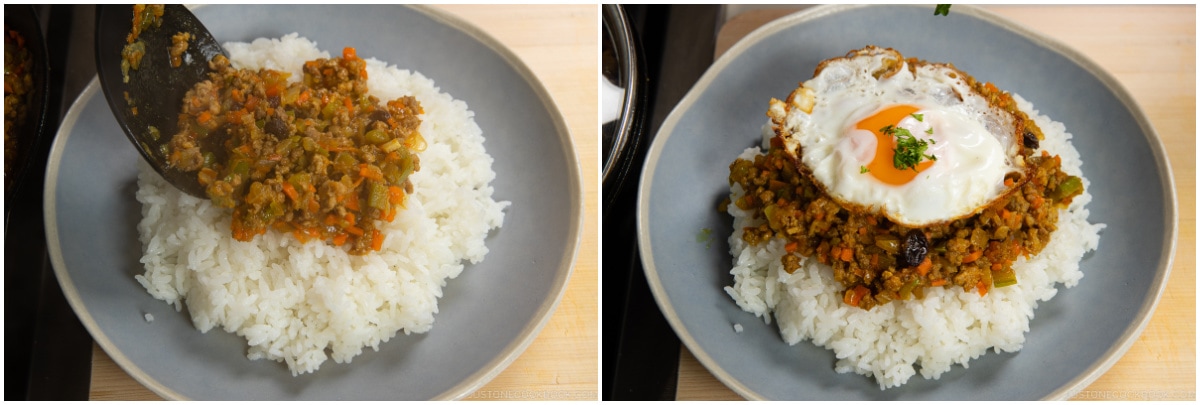
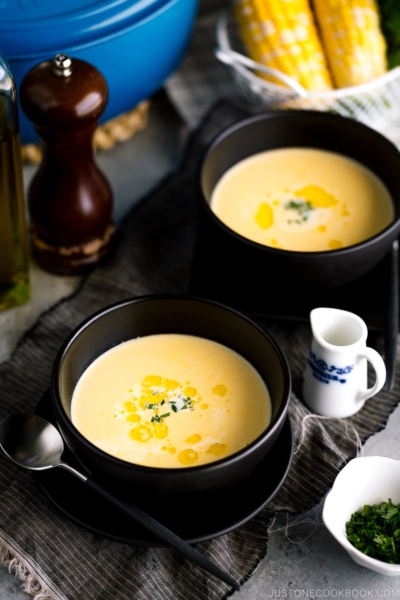
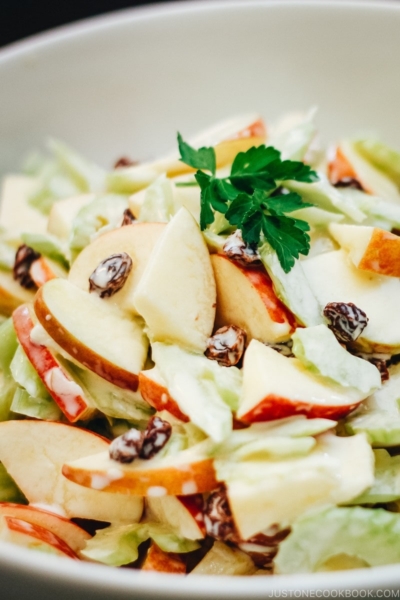
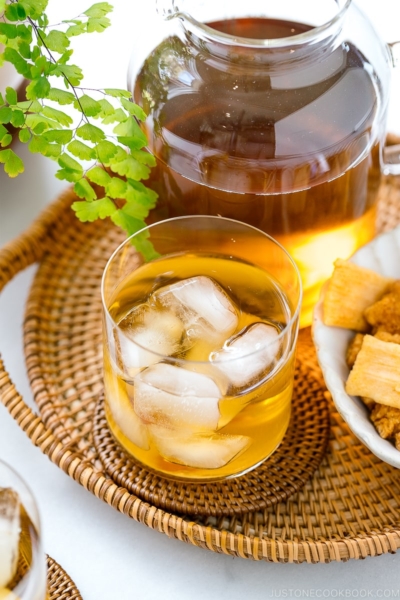
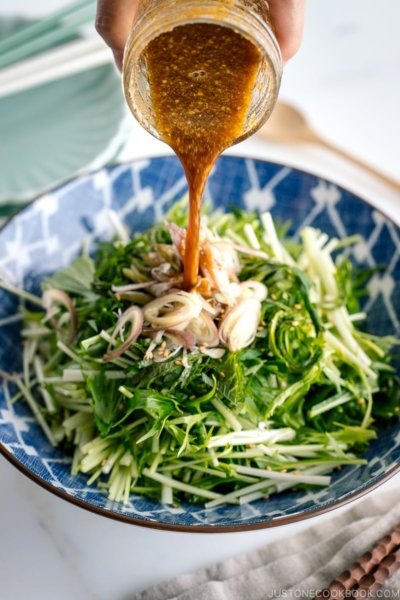




I have made this twice now and it is fantastic. I pretty much followed the recipe exactly the first time but did omit the raisins. The second time I also added some chopped fresh swiss chard from our garden which we found to be a nice addition. Even without the raisins, it is still a touch sweet for my palate and next time I will probably cut back the honey by half. But otherwise, the whole family loves this recipe and it will be going into the regular rotation. Thanks!
Hello, Franklin! We are very happy to hear that you and your family enjoyed Dry Curry.🥰
Thank you for trying Nami’s recipe and sharing your experiences with us.
Happy cooking!
Hi,
I have some ground turkey to use up. I know you recommend beef/pork combo, but with such flavourful seasonings, you think it will be okay or should I stick with the other meats and use the turkey elsewhere?
Tamara
Hello, Tamara. Thank you for reading Nami’s post and trying her recipe!
We believe that combining both beef and ground pork will enhance the flavor of this recipe, but you can also use ground turkey. It depends on your preferences. 😊
I made Dry Curry for the first time tonight, following the directions exactly. It turned out great, really flavorful. It was a little wet after the 5-minutes cooking so I cooked it another minute with the lid off and it got to be the consistency as shown in the pictures. Wasn’t sure how much rice to use so I put a 250g donburi portion on a 9” plate and it seemed to be the right amount.
Hello, Land. We’re glad to hear you enjoyed Nami’s dry curry recipe.🥰
For this dish, the rice amount ranges from 200g to 240g. But one serving of rice in the rice bowl is typically approximately 150g.
We hope this helps!
Just made this tonight and it’s so yummy! I’m going to add some toasted cashews next time as a crunchy topper. 😁
Hi, Queenie! Thank you very much for trying Nami’s recipe!
Additional roasted cashews sound great!🤩